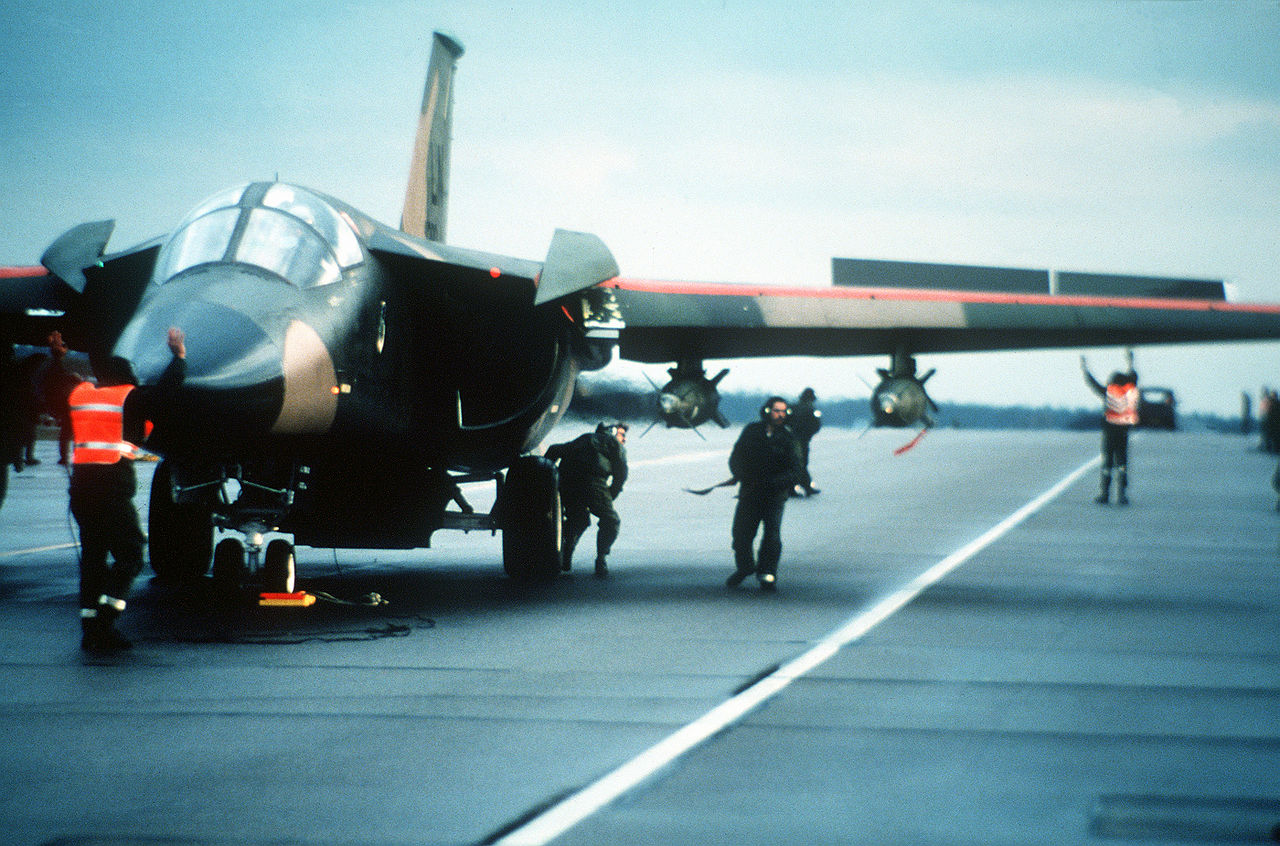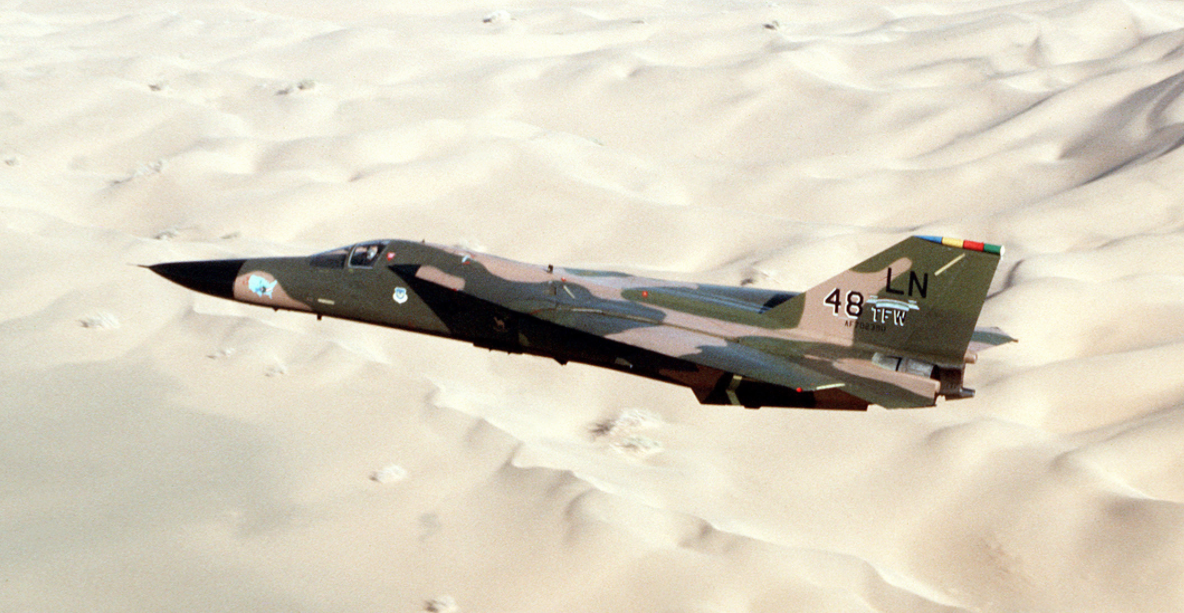
14 April 1986: In response to several acts of international terrorism sponsored by the Libyan regime of Muammar Khadafi, the United States launched Operation El Dorado Canyon. Along with A-6E Intruders, F/A-18 Hornets and A-7 Corsair IIs from the aircraft carriers USS America and USS Coral Sea, 24 General Dynamics F-111F Aardvarks of the 48th Tactical Fighter Wing from RAF Lakenheath, accompanied by EF-111 Ravens for electronic counter measures, and flew 3,500 miles to their targets.
Navy aircraft attacked Benina Airfield and the Benghazi barracks, while the Air force fighter bombers, using GBU-10 Paveway II 2,000-pound laser-guided bombs, attacked the Aziziyah Barracks and the Sadi Bilal terrorist training camp at Tripoli. Because of the length of the flight, the F-111s had to refuel from KC-10 Extender air tankers four times in each direction. The KC-10s, in turn, refueled in flight from KC-135 Stratotankers.
There were very stringent rules of engagement in place, and for that reason, the majority of the Aardvarks did not release their bombs.
Libya had some of the most sophisticated air defenses in the world. Analysis indicated that only three cities in Russia were more heavily defended. Even so, of the 55 aircraft in the two attack forces, only one F-111 was lost, probably shot down by a surface-to-air missile. Its two man crew were killed.
A number of Libyan aircraft and facilities were destroyed. 37 people were killed and 93 wounded. From the standpoint of destruction caused, the results were minimal. But the effects on Colonel Khadafi were pronounced, and resulted in a significant scaling back of his regime’s terrorist activities. Viewed from that perspective, the mission was a complete success.

© 2015, Bryan R. Swopes
I remember that day so well. Of the 2 planes one never made it back but the other was well hidden in Rota Naval Air Station Spain. I was a teenager and saw it take off. It was a day all of us baseball players at that time never forgot. It was loud, it was fast, it was large, the F-111 was an awesome aircraft.
Would you like to add this to your website?
On 14 April 1953 first mass production helicopter of the famous Soviet-Russian Kamov design bureau – the two-seat utility Ka-15 – made its maiden flight.
Kamov Ka-15
https://en.wikipedia.org/wiki/Kamov_Ka-15
Thanks for the suggestion, Mike. I’ll do some research.
I was there that day! Most of us were used to the Baby Elephant Walk, but this time it wasn’t an exercise! All we could wish for was God Speed to our crews as they left for the attack.
I was the boom operator on that refueled Karma 52. I took the last pictures of them coming off my boom that night. Our crew flew a 19 hour mission that night because we only got one receiver back from the attack and had the most fuel left. We eventually picked up another F-111 that over boosted one of his engines and dropped him of in Spain, Rota I believe.
They’ve got my pictures in a book that my Aircraft Commander gave them. They did confiscate my camera when I landed.
Raid on Qaddafi: The Untold Story of History’s Longest Fighter Mission by the Pilot Who Directed It, by Robert Venkus
The mission was so long because our French, Spanish and Italian NATO partners refused use of their airspace for the transit adding over a thousand miles to the trip. Each way.
Amusingly an errant bomb almost hit the French Embassy in Tripoli. Guess the crew was overly tired from the detour.
In any case it changed Kadaffi’s behavior. Perhaps it was the video of the Paveway targeting cursor resting on the structure he was sleeping in before moving off to designate the actual target, an adjacent building. Have to love pilot humor.
This is one of the main reasons I do not want to visit these countries. Especially France; despite the desires of my wife!
I didn’t think F-18 was operational in 1981??
Disregard. I was looking at the caption.
Wonderful post
Thank you!